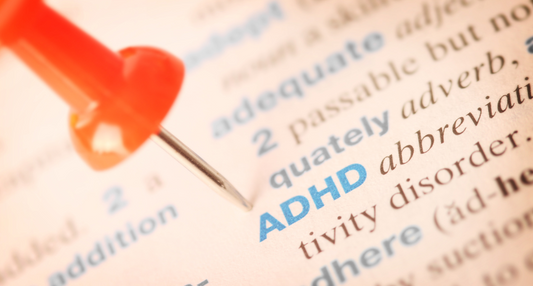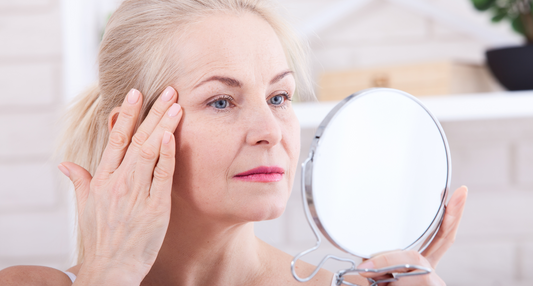What Is Perimenopause?

Share
What is perimenopause you ask? Board-certified OBGYN Dr. Mary Claire Haver breaks it down…
What Is Perimenopause?
The average age for menopause is 51. Menopause is defined by the date in time exactly one year after your last period (due to the natural decline of our reproductive hormones). As health care providers, we have great tests to diagnose menopause. It is still normal to experience menopause between the ages of 45 and 55 (51 is just the average – like the due date in pregnancy). Perimenopause is where it gets interesting and where health care providers struggle with the diagnosis.
Perimenopause is defined as the time period during which your body makes the transition to menopause.
Perimenopause is marked by erratic fluctuations in estrogen and can last up to 10 years. It is simple math to figure out that a woman can begin experiencing perimenopausal symptoms In her mid 30’s. As health care providers, we do not have a great test to diagnose perimenopause due to these daily fluctuations. Officially – the diagnosis is usually made by listening to the patient’s symptoms and ruling out other causes.
Perimenopause refers to the years preceding menopause. The amount of estrogen generated by the ovaries begins to erratically decline throughout your 30s and 40s. A change in your period is a frequent symptom of perimenopause. Cycles may become longer or shorter than what is typical for you. You could start skipping periods, and the flow may grow lighter or heavier.
Even though variations in monthly bleeding are common during perimenopause, you should still tell your doctor about them. Abnormal bleeding might indicate a larger problem that needs to be evaluated by a physician.
What Additional Indications And Symptoms Can Occur During Perimenopause Besides Menstrual Cycle Changes?
Each woman’s perimenopausal experience is unique. Some women have no perimenopause symptoms or simply a few minor symptoms, while others experience a wide range of symptoms that can be quite severe. These symptoms may include:
Hot Flashes
A hot flash is a quick sensation of warmth in the upper torso and face. A hot flash might last anywhere from a few seconds to many minutes. Some women have hot flashes once or twice a month, while others experience them daily. Nighttime hot flashes (night sweats) might wake you up and make you feel weary and sluggish during the day.
Insomnia
You may experience insomnia (difficulty falling asleep), or you may wake up earlier than normal. Sweaty nights might make it difficult to sleep.
Weight Gain
Many women experience unexplained weight gain during perimenopause – thought to be due to the effects of changing hormones on appetite and metabolism and the hormones that control how and where we store fat.
Increased Visceral/Belly Fat
The rising activity of our circulating androgens (testosterone and others) leads to a change of where we store fat – less about the hips and thighs and more into the “belly fat” area. This change is marked by an increasing waist to hip ratio with age in women.
Hair Loss/Changes
The majority of women suffer from hair thinning rather than bald patches. The hair on the front, sides and top of the head might start to thin. Brushing and bathing may cause hair to fall out in big clumps.
According to research, hair loss during menopause is caused by a hormonal imbalance. It’s specifically linked to a decrease in estrogen and progesterone production. Hair grows quicker and stays on the head for longer when these hormones are present. The rising activity of testosterone can also drive hair loss during this time and an increase in terminal hairs (whiskers) on the face and chin.
Memory Loss
Memory problems are common during perimenopause. You could be concerned about memory lapses if you’re in perimenopause. Mild memory issues and a general fogginess, on the other hand, are extremely frequent. They occur as a result of your body producing less estrogen. And the impact is just transitory for many women.
Vaginal And Bladder Problems
As estrogen levels drop, the vaginal lining may become thinner, drier, and less elastic. During intercourse, vaginal dryness can cause discomfort. You may be more susceptible to urinary or vaginal infections if your estrogen levels are low. A loss of tissue tone may cause urinary incontinence.
Mood Shifts
Mood swings, impatience, and an increased risk of depression are all possible symptoms of perimenopause. Sleep disturbance caused by hot flashes might be the source of these symptoms. Mood swings can also be induced by reasons unrelated to the hormonal changes in perimenopause.
Health Risks
Before menopause, estrogen generated by women’s ovaries protects them from heart attacks and strokes. Women lose a lot of this protection after menopause because less estrogen is produced. Midlife is also when risk factors for heart disease, such as excessive cholesterol, high blood pressure, and a lack of physical activity, become more prevalent. In menopausal women, the combination of all of these variables raises the risk of heart attack and stroke.
Sexual Function Changes
Sexual arousal and desire may alter during perimenopause. However, if you had adequate sexual intimacy before menopause, you will probably have it during perimenopause and beyond.
What Can You Do?
Perimenopause is often diagnosed by symptoms alone. There is not a perfect “blood test” to determine if a woman is in perimenopause due to the widely fluctuating hormone levels.
A discussion with your doctor of your symptoms can lead to answers and possible treatment, including changing your eating and nutrition, possible over-the-counter supplements, and potential hormone therapy. Building your menopause toolkit can go a long way in helping to improve your symptoms and overall quality of life.
If you are not sure where you are in your menopause journey, we invite you to take our Menopause Quiz, here. Your answers can help determine whether you are in perimenopause or not.
If you are interested in learning more about the science behind The Galveston Diet, click here.










